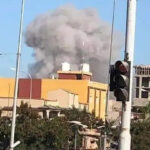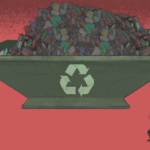The public has recently engaged in all sorts of satire on the government’s Php64 food threshold. Others have been looking for conspiracy theories on the figure’s absurdity. I’ve been more inclined to look for my own sanity.
The other night, I bought three salted eggs for Php50 and three tomatoes for Php20 from my suki (favorite vendor). While paying, I joked, “O, lampas na ang Php70 sa Php64 na threshold (O, Php70 is more than the Php64 threshold).” Amused, my suki replied, “Onga. Wala pang rice yan ‘Teh (Yes, and you still don’t have rice to go with that.” She added, shaking her head, “Usap-usapan nga dito ngayon sa talipapa yang Php64 na sabi. Ang baba talaga e (That Php64 food threshold has been the talk around the small neighborhood market lately. It’s just too low).” I then added a 6-pack of tinapang salinas (smoked local fish) worth Php40.
That would be lunch for three people the following day. Add one-and-a-half cups of rice, costing around Php10.30 from the Php55-a-kilo I recently bought, it totals Php120.30. Divide by three, lunch costs Php40.3 per person. Considering that my husband and I have already cut down on rice to let our bunso (youngest child) eat as much as he needs.
The next evening, I had to eat in between work and errands. Exhausted from a two-hour commute due to terrible post-rain traffic, I looked forward to a meal of pancit canton, an egg, and instant coffee. This quick-to-cook meal cost Php31, multiplied by three, it would still be over the official food threshold. But who would want to have this meal every day?
I recall urban poor leader Ka Mimi Doringo saying that Php64 can buy cheap meals, like the bentelog (Php20 rice, egg, and hotdog/longganisa/embutido) or instant noodles, but these won’t provide the nutrients we need. One ends up sick or malnourished from repeatedly consuming these, she said, which would eventually entail more expenses.
The government presents a menu that it describes as “sufficiently nutritious”, but come to think of it, Php64 is not even enough for this menu. Mixed with either boiled rice or corn for each meal, the menu consists of: scrambled egg and coffee with milk for breakfast; boiled monggo (mung beans) with malunggay (moringa) leaves, dried dilis (anchovy) and a banana for lunch; and fried fish or boiled pork and a vegetable dish for dinner.
I made real-life computations. I’m getting free malunggay and talbos ng kamote (camote shoots) as the lunch and dinner greens from our backyard. Breakfast costs Php21.90, lunch Php28.90, and dinner Php23.60. That’s Php74.40-Php97.40 for one person per day. Here’s the breakdown:
Breakfast – Php21.90
- Php6.90 – 1 serving of rice from Php55/kilo
- Php7.00 – smallest egg available
- Php8.00 – 3-in-1 coffee
Lunch – Php28.90-Php41.90
- Php6.90 – rice
- Php5.00 – small pack of monggo
- Php0.00 – malunggay (picked from the backyard; Php10.00 if bought per bunch)
- Php10.00 – small pack of dilis
- Php7.00 – banana from 5-piece Php35-peso bunch (Php10.00 if bought per piece)
Dinner – Php23.60-Php24.60
- Php6.90 – rice
- Php16.70 – 1 of 6 Php100-peso galunggong
- Php0.00 – talbos ng kamote(Php10.00 if bought per bunch)
This doesn’t include snacks, cooking oil, and condiments.
But the Philippine Statistics Authority (PSA) argues that the menu is based on the least-cost method approach, which means the lowest possible cost to arrive at the menu. It must be prepared at home, PSA says, not to be bought in stores. It must be based on minimum basic needs.
Even if we spend a day to scour the markets for the ingredients for that menu, we won’t find the least-cost in real life. Some are kidding that the PSA is living in another planet.
What makes the food threshold even more pathetic is that it is based on a food basket that was last revised by the government in 2011.
The government may argue that things are cheaper by the dozen. But who has the capacity to buy in bulk? Low-income families always buy tingi (in small quantities), because their incomes also come that way, tingi. And what cheaper by the dozen are we talking about when inflation is permanent and harsher on the poor?
This is the reality – the government deliberately maintains a ridiculously low threshold for food poverty and poverty in general to set a low standard for wage-setting and standard of living. These are favorable to attract investors, and also for the government to maintain a low ambition to address poverty. This low ambition has also allowed the government, by policy, to turn a blind eye to growing inequality and gap between rich and poor.
Is it a conspiracy? No, it is more of a systemic perpetuation of poverty conditions while the elite, the super-wealthy and foreign investors, reap increasing profits. They are enabled by government policymakers and economic managers who are so privileged that they can only make mechanical estimates of a low food threshold that justifies their complacency in poverty eradication. ###



